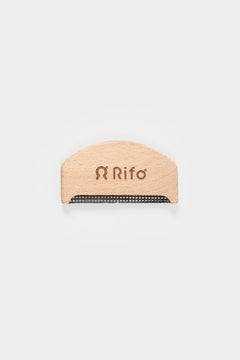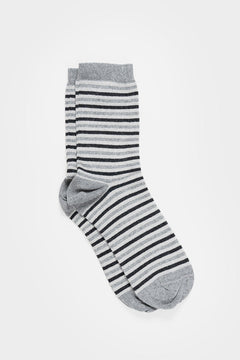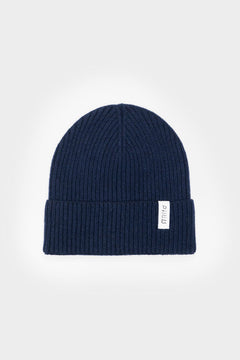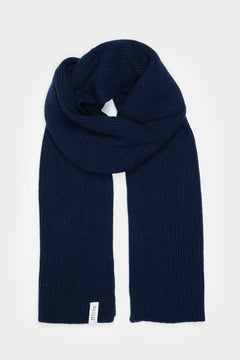When we talk about sustainability and circular economy, we often refer to the 4 Rs: Reduce, Reuse, Recycle, and Recover. These core strategies aim to reduce environmental impact through responsible and conscious use of resources.
The 4 Rs are the foundation of the circular economy, an economic model where every product and material is designed to last longer, be reused, recycled, or recovered. At Rifò, we put these strategies into action in the textile and fashion sectors.
What are the 4 Rs of the circular economy and how to apply them?
- Reduce: make less, use better
- Reuse: give clothes a second life
- Recycle: turn old into new
- Recover: value every resource
- Rifò: a real example of circular fashion
Reduce: make less, use better
Reduction means limiting unnecessary consumption, generating less waste, and using fewer resources from the start of the production process. Reducing doesn’t mean giving up, but making conscious choices to buy durable, high-quality, and multifunctional products. In fashion, this means designing and producing long-lasting garments that stand the test of time in both material and style.
A brand committed to reduction should also aim to minimize unsold stock by producing less. This avoids large-scale production, which often aims to cut costs, and instead meets real market demand.

At Rifò, we apply this principle by raising consumer awareness and promoting mindful purchasing of long-lasting, high-quality products. Through clear, transparent communication, we inform about material properties, supply chains, and clothing care tips to help garments last longer.
We also produce only what is needed thanks to our anti-waste pre-order model, which lets us collect orders before production begins, offering discounts based on delivery time. This helps prevent waste and overproduction.
All of this is made possible by our zero-kilometer production model, built on the skills of local artisans. We manufacture locally in small batches, focusing on quality. This wouldn’t be possible with offshore, large-scale production.
Reuse: give clothes a second life
Reuse means extending a product's life by repairing, swapping, reselling, or donating it when it's no longer usable for its original purpose. Reuse avoids waste and delays the transformation of a product into trash.
In textiles, reuse comes to life through repair services, second-hand platforms, resale options, and clothing swaps.
As a circular fashion brand, we implement reuse through various initiatives. One is our used clothes collection program, encouraging people to return garments they no longer wear. These items are either recycled or resold through a transparent supply chain, significantly cutting textile waste.
In this same direction, we have been working on a new project, available since November 2025: Re-Rifò, the resale platform where our community can sell their second-hand Rifò garments. Unlike the main second-hand marketplaces, each item is sanitized and refurbished, and sellers receive a Rifò voucher corresponding to the item’s value—based on the model and its condition—as soon as we receive and inspect it, thanks to the technology of our recommerce partner, Trove.

We also offer the Love Lasts repair service. Within three years of purchase, anyone can send us their damaged Rifò sweater. Our skilled artisans will mend it for free, preserving the rare craft of knitwear repair that fast fashion has nearly erased.
Repairing knitted clothes is increasingly rare, as fast fashion has taught us to throw away instead of cherish what we wear. That's why we plan to extend this service beyond just Rifò garments.
Recycle: turn old into new
Recycling means turning waste or end-of-life products into new resources. This recovers raw materials that would otherwise be lost, reducing reliance on virgin resources and lowering waste.
In textiles, recycling means transforming old garments and fabric scraps into new recycled fibers, yarns, and fabrics used to create sustainable new collections.

At Rifò, we make collections only using recycled yarns from old garments and industrial scraps. This process creates recycled fibers, yarns, and fabrics that power new sustainable fashion lines while drastically reducing environmental impact and the need for virgin materials.
Recover: enhancing every resource
Recovery means extracting value from materials that would otherwise be permanently discarded. This can happen through recycling, composting, energy recovery, or creatively reusing production waste.
In textiles, recovery often means turning production waste into new accessories, patchwork designs, insulation, or Zero Waste pieces, reimagining what would be considered waste into something useful and beautiful.

At Rifò, we apply this principle by creatively repurposing our production waste into Zero Waste collections, accessories, and garments made from leftover yarns and fabric scraps.
We also create collections using deadstock fabrics, sourced from manufacturers who had unused textiles sitting in warehouses for years. In doing so, we transform waste into creative, functional fashion without the need for new materials.
Rifò: a real example of circular fashion
Through these initiatives, we put the 4 Rs into action and spread a culture of sustainability that involves consumers, communities, and the planet, creating a truly circular fashion ecosystem.
We are aware of the challenges ahead: improving garment collection and traceability to enhance material recovery, and investing in R&D to expand the range of recycled products.
Raising awareness about the circular economy remains key to encouraging more people to adopt sustainable practices—even those who are just starting to learn about this important shift.








